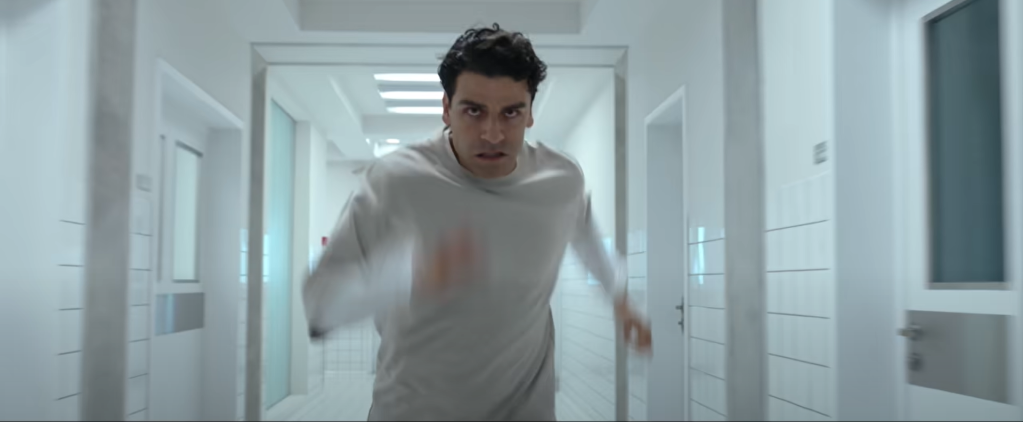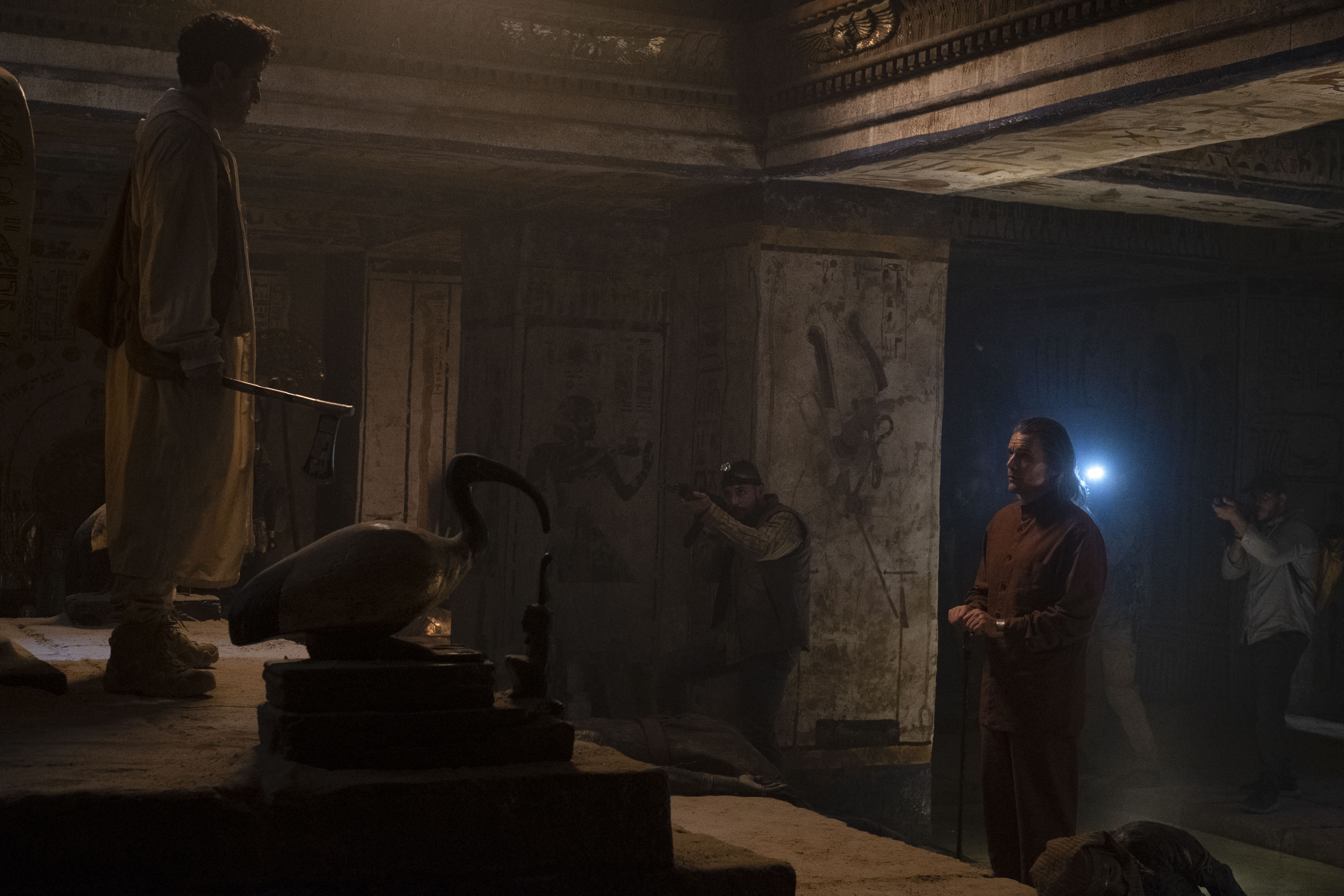Warning: spoilers ahead for episode 4 of .
With all the twists and turns that Moon Knight has offered so far, no one could have expected delivered this week on Plus.
After being shot point blank by Arthur Harrow (Ethan Hawke) in Ammit’s tomb, Marc Spector (Oscar Isaac) ends up in what appears to be a mental health facility, where he not only encounters his wife Layla (May Calamawy) but also his alter Steven Grant in a separate body.
Moon Knight cinematographer Andrew Droz Palermo, who worked on episodes two and four, broke down the way they made the corridor move Inception-style while speaking to Metro.co.uk, before Marc and Steven came face to face with the mysterious (Antonia Salib).
Fans were left with plenty of burning questions when the episode ended, especially regarding who was in the third sarcophagus spotted by Steven, the prediction being that it could be his .
Andrew, whose previous work includes the films A Ghost Story and The Green Knight, promised that by the end of Moon Knight, there will be some more clarity regarding the meaning of the moving corridor.

Speaking about that scene, he said: ‘That part is so fun for me. It was just almost Kubrickian,’ referencing the corridor in The Shining, which was directed by Stanley Kubrick.
‘We were chasing him down the hallway, and the lanterns, I think we did practically. I’m not sure if they were digitally replaced or not, but Oscar sells those things so well by the way he becomes unstable.’
Andrew commended Oscar for ‘selling’ the fact that the corridor was moving, explaining that if the lanterns had been moving and the camera had been rotating but he carried on walking as normal, then ‘no one would believe it’.
‘He really sells it because of being unstable, both because of medication and also because of the corridor,’ he stated.
‘There’ll be some more of what that corridor is all about in later episodes, which you’ll see, and why it’s doing this. So something to look forward to.’


Andrew said that he felt ‘really lucky’ to be the cinematographer on episode four, collaborating with directors Justin Benson and Aaron Moorhead, due to the many components it included, from the tomb fights to the creation of the Indiana Jones-esque movie Tomb Busters.
‘I’ll just say that getting that script for us and knowing that we got to go to all those places. To start in Jordan – Jordan for Egypt – going to all these tombs. To then get to make that really silly B-movie Tomb Busters thing, and then the hospital with that cliffhanger, to have him be shot and fall back into the water was just a feast for me. So I felt really lucky to have that episode and it just offered so many different things to me as a cinematographer,’ he said.
One of the most poignant and cinematic moments of the episode came when Marc was shot by Harrow, as he falls backwards into the water and then rather than float, continues to sink further down.
Andrew expressed how much joy he had figuring out how to bring that shot to life, which he did by using a Moon Knight figurine and moving his iPhone around it to work out the logistics of the scene.
Dubbing it a ‘fun challenge’, he said: ‘That shot of when he’s falling into the water and going into the afterlife, or into the mental institution, however you want to perceive it right now, that was such a fun shot to devise.’
The hippo goddess Taweret who showed up at the end of the episode has been a significant point of discussion among fans, as they wonder how the character – who is not in the Marvel comics – will impact the narrative.
In Ancient Egypt, Taweret was a benevolent being known for protecting mothers and children, as well as symbolising fertility, rebirth and rejuvenation.
She was also thought to help people who had died pass safely into the afterlife… which makes her appearance now, when Marc and Steven have just been shot, that much more intriguing.
Moon Knight is available to watch on Disney Plus with new episodes released on Wednesdays.




















